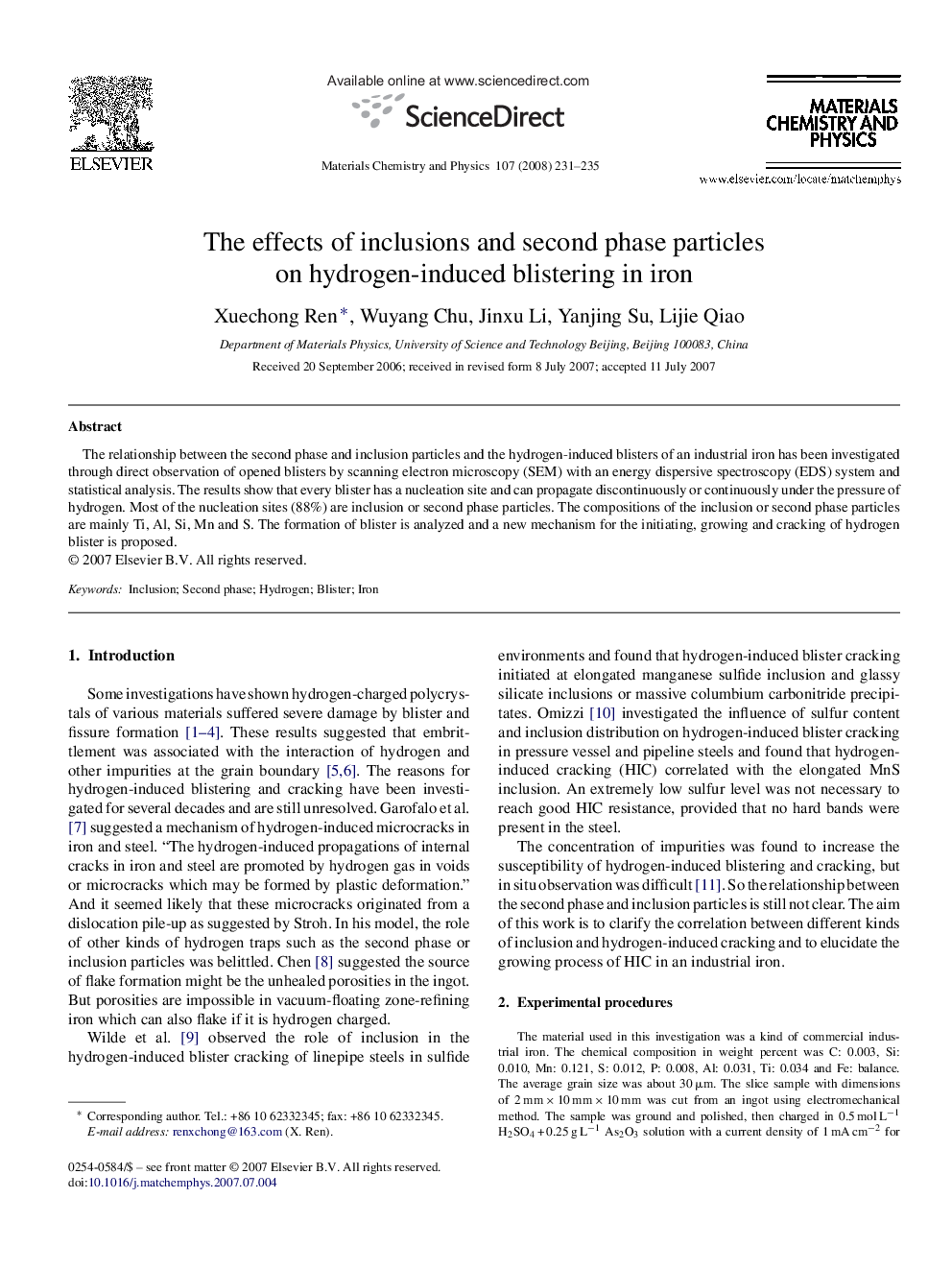| Article ID | Journal | Published Year | Pages | File Type |
|---|---|---|---|---|
| 1526998 | Materials Chemistry and Physics | 2008 | 5 Pages |
Abstract
The relationship between the second phase and inclusion particles and the hydrogen-induced blisters of an industrial iron has been investigated through direct observation of opened blisters by scanning electron microscopy (SEM) with an energy dispersive spectroscopy (EDS) system and statistical analysis. The results show that every blister has a nucleation site and can propagate discontinuously or continuously under the pressure of hydrogen. Most of the nucleation sites (88%) are inclusion or second phase particles. The compositions of the inclusion or second phase particles are mainly Ti, Al, Si, Mn and S. The formation of blister is analyzed and a new mechanism for the initiating, growing and cracking of hydrogen blister is proposed.
Related Topics
Physical Sciences and Engineering
Materials Science
Electronic, Optical and Magnetic Materials
Authors
Xuechong Ren, Wuyang Chu, Jinxu Li, Yanjing Su, Lijie Qiao,
